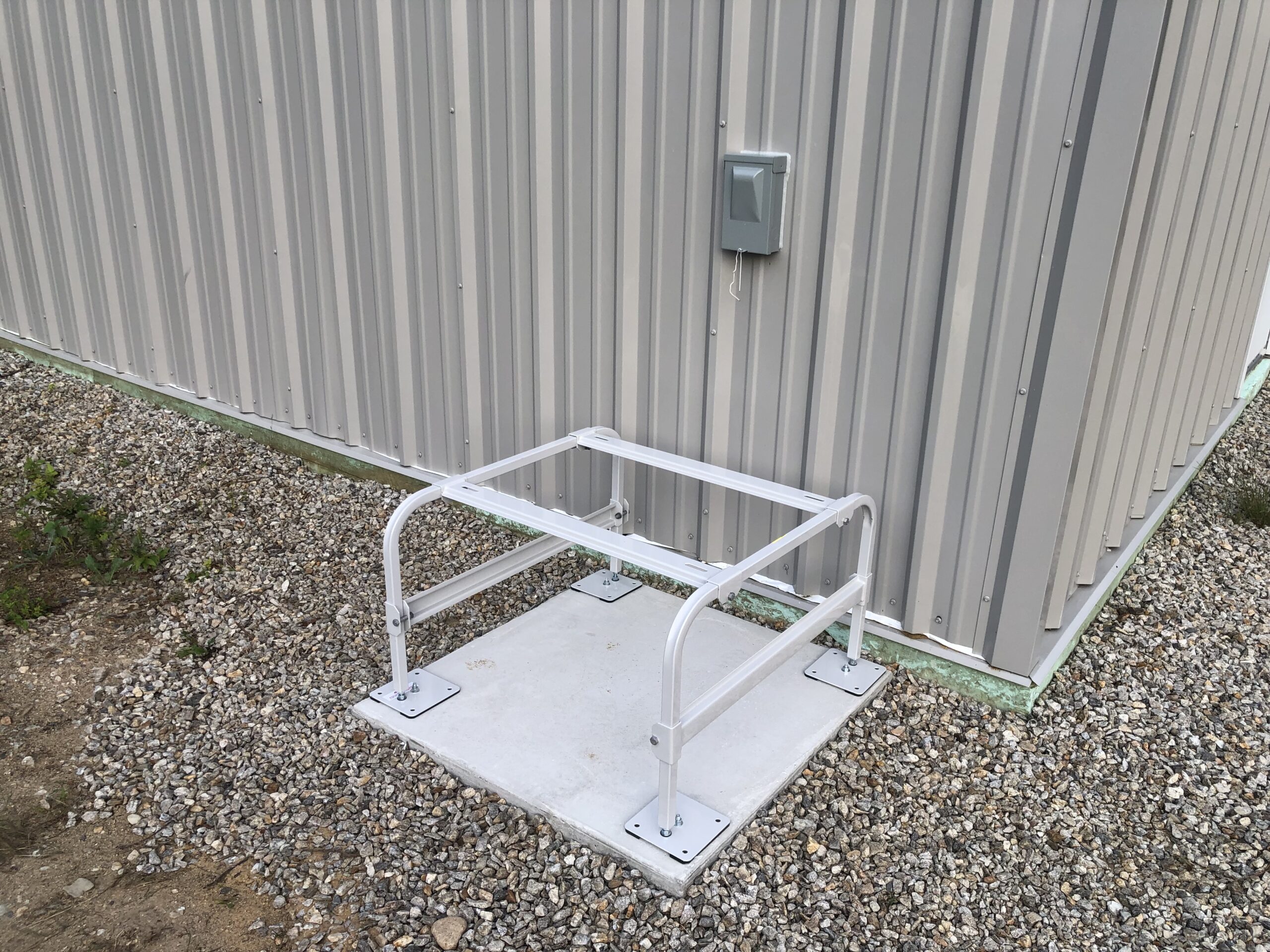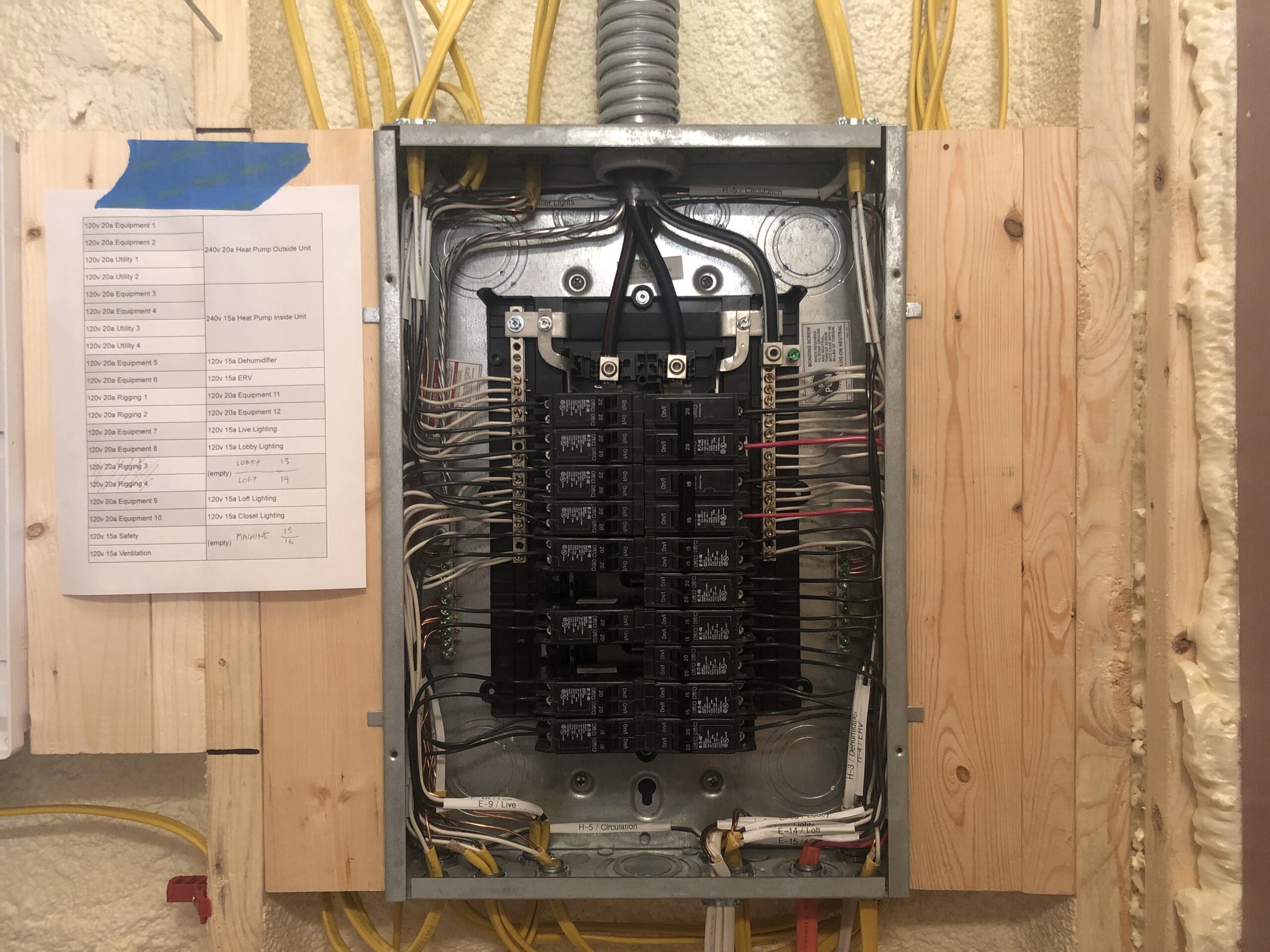Supply Ducts
October 10, 2021
Over the last couple of weeks, I installed the supply ducts that take air from the air handler, ERV and dehumidifier, and distribute it around to different vents through the ceiling.
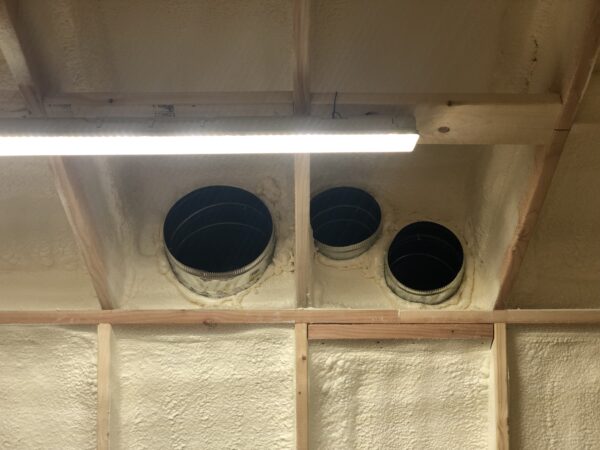
I first cut holes and then foamed in three main lines for the air handler and the dehumidifier.
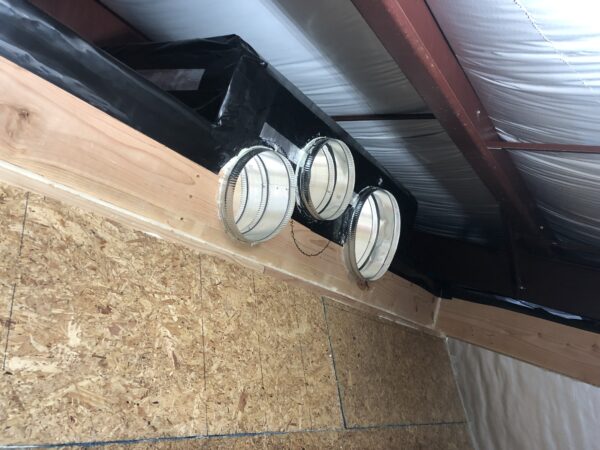
Later I will use the other side of these ports to connect up the equipment.
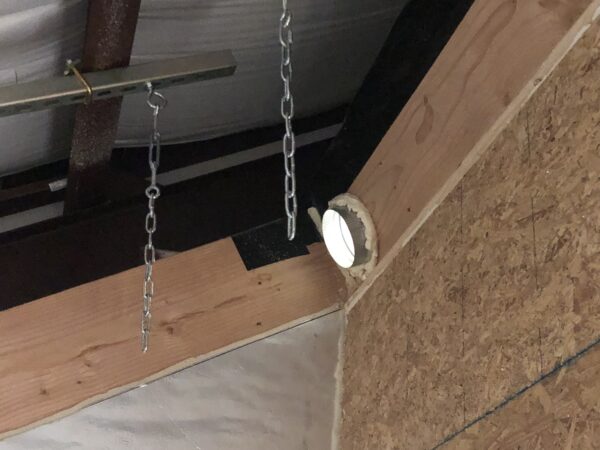
I made one for the ERV as well, which supplies fresh air.
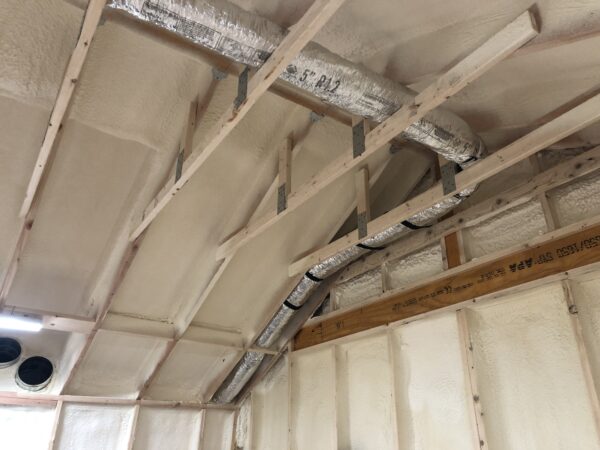
I had to modify one of the rafter blocks to get the duct through, but otherwise the ERV line ran nicely in the rafter bay.
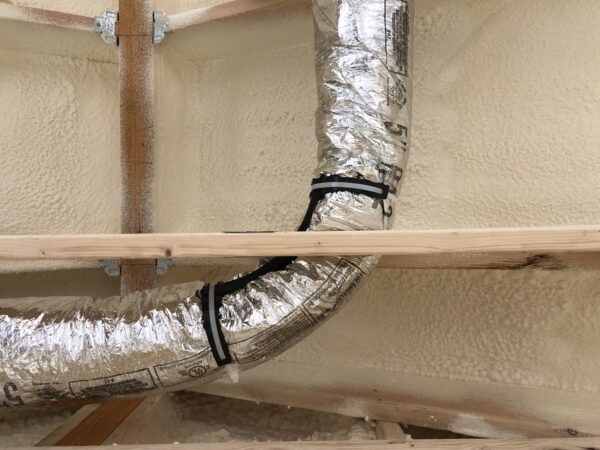
I made a wide sweeping corner to improve airflow.
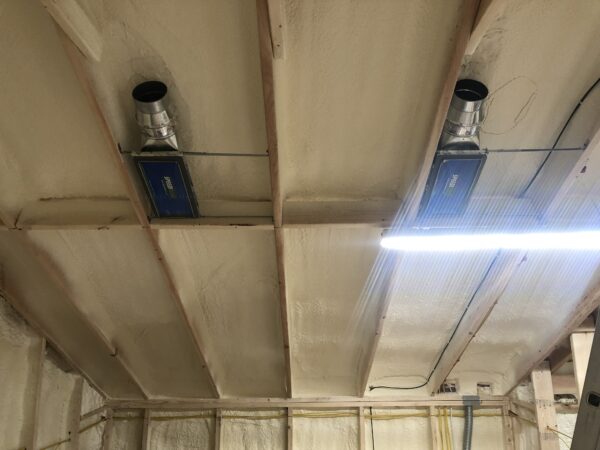
I also put all ten of the duct boots in place, in most cases having to remove some of the closed-cell foam from the ceiling to get them to fit.
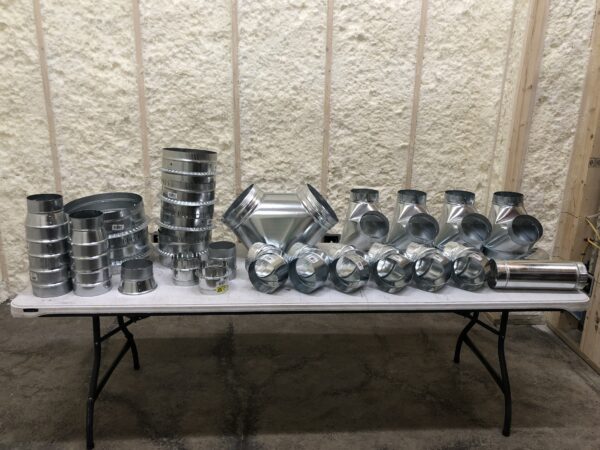
The entire system uses a number of wyes, reducers and elbows, all of which are done with rigid connectors.
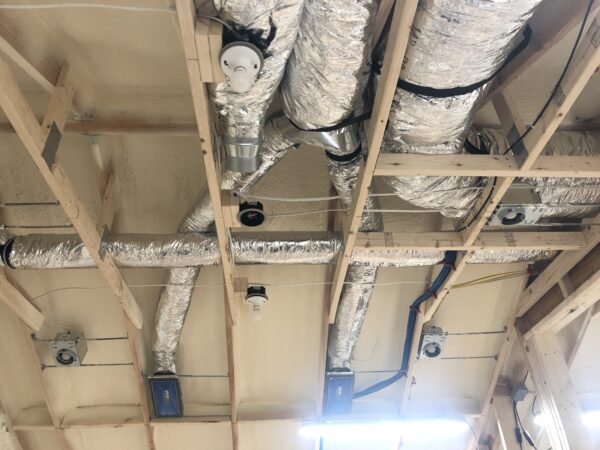
The smaller air-handler line runs to just above where desk will be.
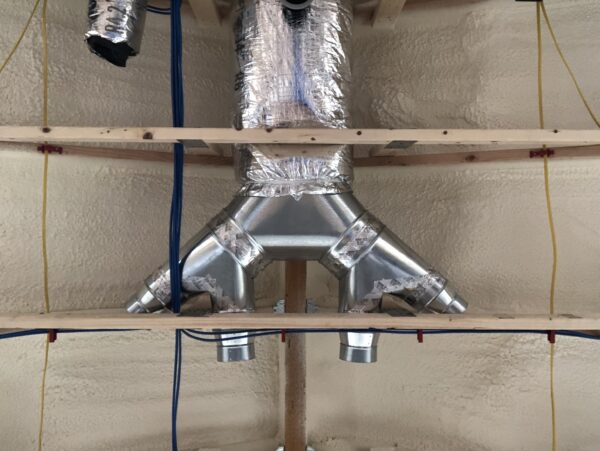
The larger air-handler line splits up into four smaller lines in the live room ceiling.
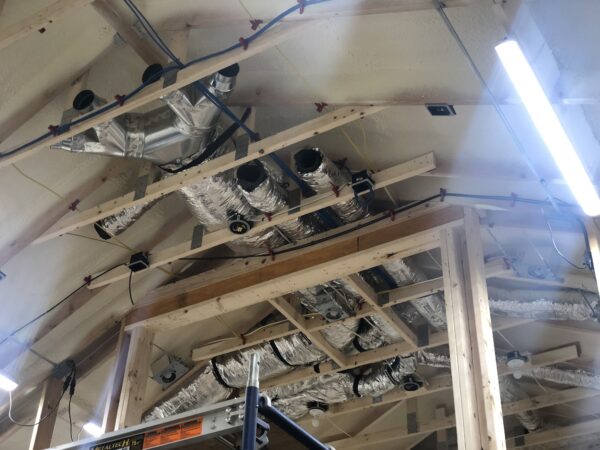
The ERV and dehumidifier lines also runs to the live room ceiling, where each splits in two.
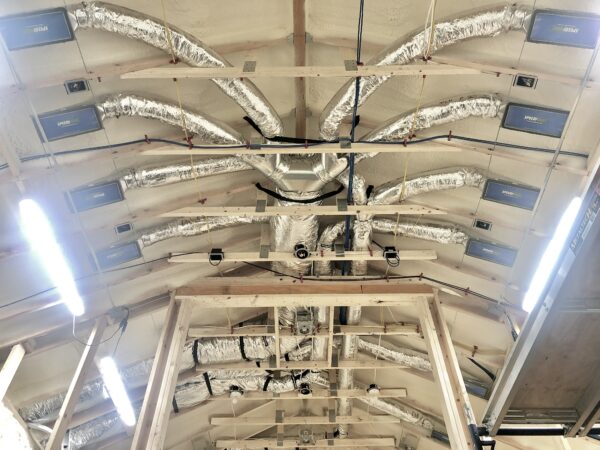
The final result is three lines leading to ten vents, distributing hot, cold, dry and fresh air where it needs to go.
- Categories
- Construction
